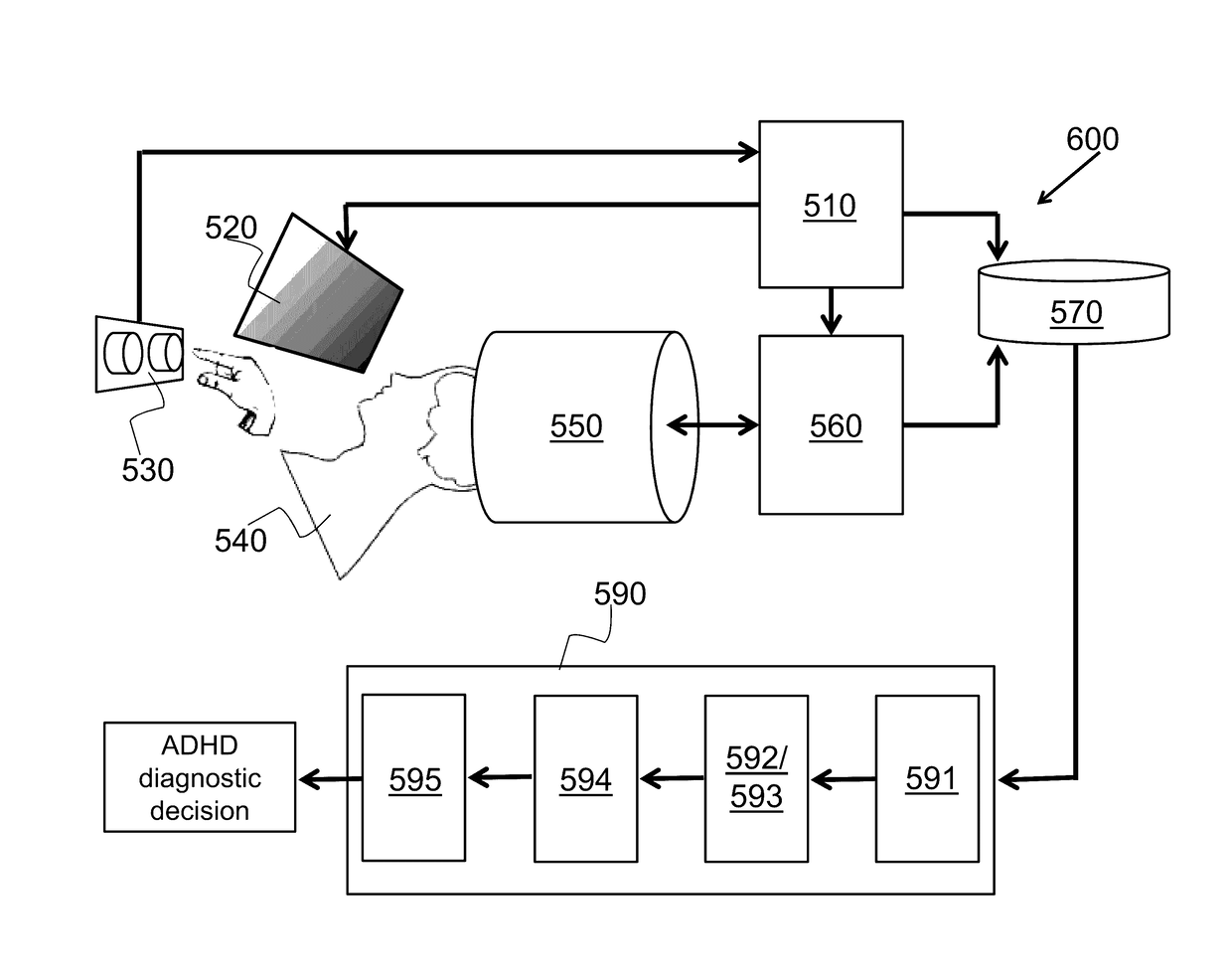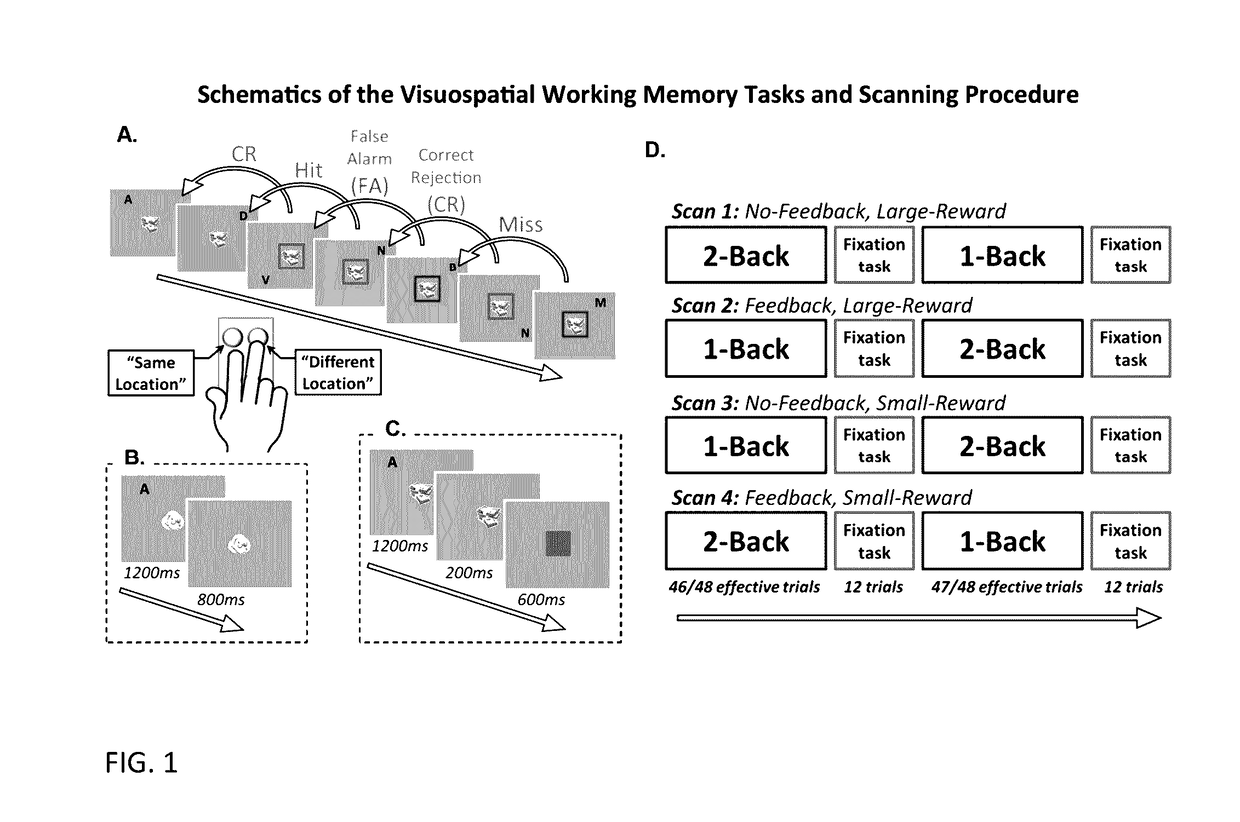PATTERN ANALYSIS BASED ON fMRI DATA COLLECTED WHILE SUBJECTS PERFORM WORKING MEMORY TASKS ALLOWING HIGH-PRECISION DIAGNOSIS OF ADHD
a working memory task and pattern analysis technology, applied in the field of multivariate neuroimaging data analysis, can solve the problems of ineffective or useful current efforts, and the most challenging task of identifying the brain regions that best characterize the clinical population, and achieve the effect of reducing the number of patients and improving the quality of li
- Summary
- Abstract
- Description
- Claims
- Application Information
AI Technical Summary
Benefits of technology
Problems solved by technology
Method used
Image
Examples
Embodiment Construction
[0022]In the following detailed description, reference is made to the accompanying drawings that form a part hereof, and in which is shown by way of illustration specific examples that may be practiced. These examples are described in sufficient detail to enable one skilled in the art to practice the subject matter, and it is to be understood that other examples may be utilized and that logical, mechanical, electrical and other changes may be made without departing from the scope of the subject matter of this disclosure. The following detailed description is, therefore, provided to describe an exemplary implementation and not to be taken as limiting on the scope of the subject matter described in this disclosure. Certain features from different aspects of the following description may be combined to form yet new aspects of the subject matter discussed below.
[0023]When introducing elements of various embodiments of the present disclosure, the articles “a,”“an,”“the,” and “said” are i...
PUM
 Login to view more
Login to view more Abstract
Description
Claims
Application Information
 Login to view more
Login to view more - R&D Engineer
- R&D Manager
- IP Professional
- Industry Leading Data Capabilities
- Powerful AI technology
- Patent DNA Extraction
Browse by: Latest US Patents, China's latest patents, Technical Efficacy Thesaurus, Application Domain, Technology Topic.
© 2024 PatSnap. All rights reserved.Legal|Privacy policy|Modern Slavery Act Transparency Statement|Sitemap



